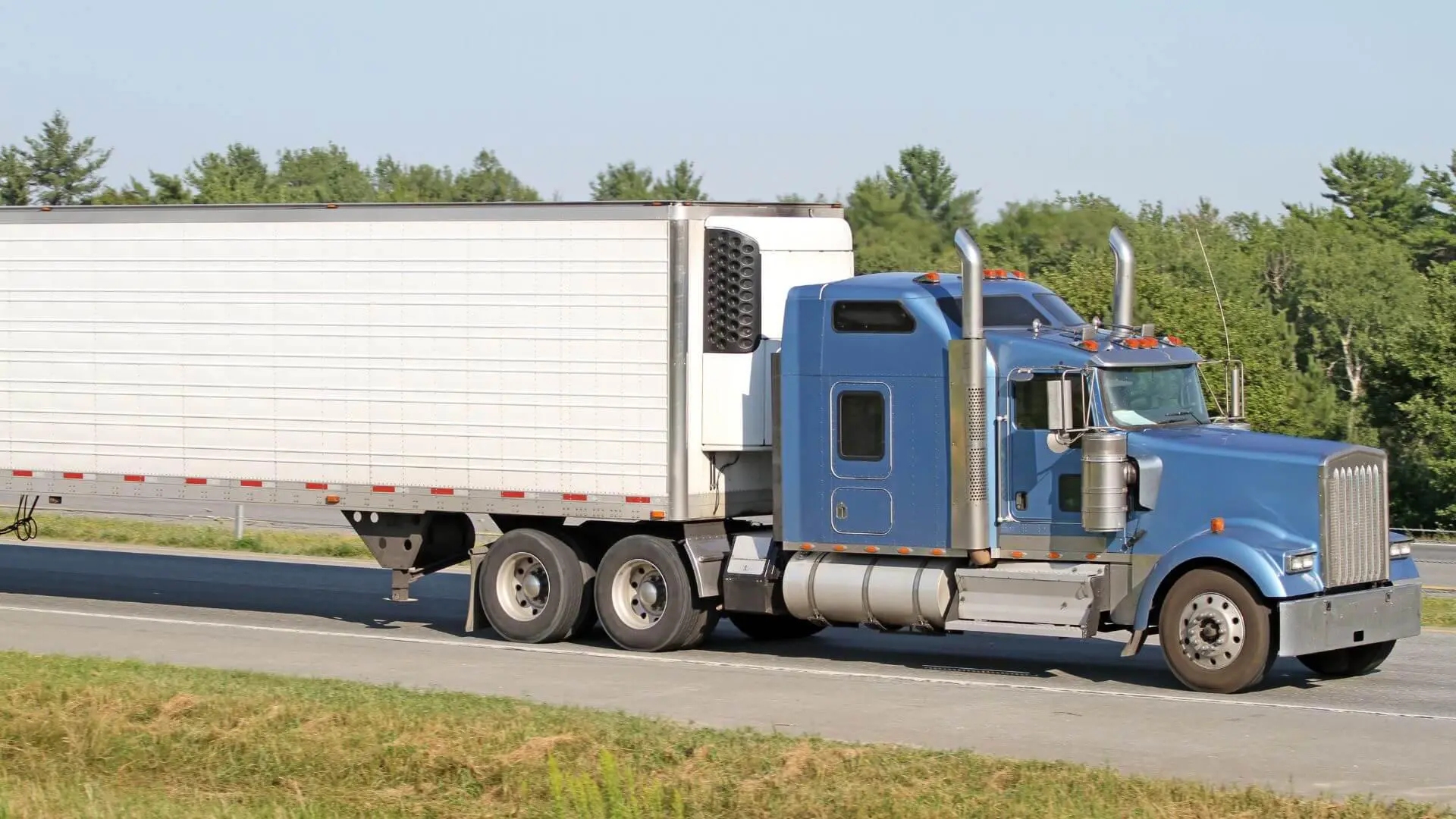Open car carriers used to be the MVPs of car transportation due to their affordable pricing. However, things are changing as more people realize the value of security during transportation that enclosed car transport services offer.
The enclosed carrier has gained a major share of the $10.4 billion car carrier market. Let’s see how you can know if you should opt for enclosed shipping or not:
Demand for Enclosed Car Transport Services is Huge, and People Commonly Use It
The enclosed car shipping market is seeing massive growth, valued at $724.2 in 2023, and is expected to exceed $1.2 billion by 2032 at a 7% CAGR. This is HUGE. However, enclosed car shipping is mostly used for luxury vehicles, and that’s the reason we see a correlation between the increase in luxury vehicle sales and the growth of the enclosed car shipping market size. Here’s the data to back that up:

Seeing the increasing rise of enclosed carrier use and the 20% increase in luxury car sales, it is clear that while enclosed transport is becoming increasingly popular, its main customer base is luxury or expensive vehicle owners. Regular vehicle owners mostly use open car shipping.
What is the Difference Between Open Car Shipping And Enclosed Car Shipping?
The biggest difference between these shipping methods comes down to loading capability and protection. Here’s why this matters:

Loading Capabilities
Open carriers typically have steep ramps that can be problematic for certain vehicles. Consider trying to load a high-performance sports car like a Porsche 911 GT3—its low front splitter could scrape or even get damaged on a standard open trailer’s steep ramp.
Enclosed car transport services offer two superior loading options:
- Hydraulic lift gates that raise the car completely level
- Extended race ramps (usually 11-foot length) that create a gentler slope
Protection Level
Open transport leaves vehicles exposed to various hazards:
- Road debris and rocks
- Weather conditions (rain, snow, hail)
- Industrial fallout and dust
- UV radiation
Enclosed shipping provides complete protection from the elements for classic car transport or luxury vehicles. Imagine shipping a restored 1960s muscle car or a brand-new Italian supercar—you wouldn’t want it pelted with rocks or soaked in rain during transit.
Professional Handling
A critical difference is the level of expertise and equipment. Enclosed carriers typically invest in specialized equipment like:
- Professional-grade tie-down systems
- Proper loading ramps (not makeshift wooden ones)
- Climate control systems
- Advanced strapping methods
| Feature | Open Transport | Enclosed Transport |
|---|---|---|
| Ramp Design | Steep loading angles, limited accessibility | Gradual angles, specialized ramps |
| Vehicle Protection | Exposed to elements and road debris | Complete protection from weather and hazards |
| Ideal For | Standard vehicles, SUVs, trucks | Luxury, classic, and low-profile vehicles |
The bottom line: If you’re shipping a standard daily driver like a Toyota Camry or Honda CR-V, open transport is usually fine. However, enclosed transport is the safer choice for vehicles that are low to the ground, highly valuable, or require special care - despite the higher cost.
Do You Need Enclosed Car Transport Services? Here’s How to Decide
Whether your car needs special treatment during shipping isn’t always straightforward. Let’s see what makes enclosed car transport services the right choice for certain vehicles, and help you make the best decision for your wheels.

1. You Need Luxury or Classic Car Transport Services
When you’ve got a car that turns heads, you need to think twice about how you’re going to ship it. Enclosed car transport becomes essential for vehicles that aren’t just regular daily drivers. We’re talking about those special sports, vintage, or exotic rides that make car enthusiasts drool.
Your car probably needs enclosed shipping if it falls into any of these categories:
| Vehicle Type | Key Factors | Protection Level Needed |
|---|---|---|
| Luxury/Exotic | High-value exotic cars worth over $150,000, Advanced aerodynamics | Maximum |
| Classic Cars | Pre-1970, Original parts | Maximum |
| Custom Builds | Modified components, Special paint | High |
Here’s the deal with luxury vehicles: If you’re rolling in a Lamborghini or a rare Ferrari, you wouldn’t want it exposed to road debris or harsh weather.
Classic car transport requires extra attention because these beauties often have irreplaceable parts that are hard to find.
Think about your car’s value beyond just the dollar signs. Sure, that $200,000 price tag means something, but even a $80,000 vehicle with custom modifications might also need enclosed shipping.
Your tricked-out ride with that one-of-a-kind paint job or those specially fabricated body panels deserves better than open transport.
2. Ground Clearance Requirements
Let’s discuss your car’s belly—specifically, how close it rides to the ground. If your vehicle sits super low, you’ll want to pay attention to this.
When your car has less than 4 inches of clearance, loading it onto a regular open carrier can be tricky. Low-riding sports cars, slammed customs, or even factory-lowered performance models need special handling.
Here’s what you need to know about ground clearance issues:
- Loading equipment isn’t one-size-fits-all. Your lowered BMW M3 needs different handling than a stock Honda Civic
- Standard carriers often have steep ramps that can scrape your car’s underside
- Modified cars with custom side skirts or splitters need extra careful loading angles
Enclosed carriers typically have special equipment, such as hydraulic lift gates, when dealing with low-clearance vehicles. These gates make loading your car as smooth as butter without any scary scraping sounds.
Remember, if you’ve spent good money lowering your ride or it came from the factory with performance-oriented low clearance, don’t risk damaging it with standard transport methods. The extra cost of enclosed shipping is way less than fixing damaged components or ruining rare parts.
3. Weather and Environmental Exposure
Mother Nature isn’t always kind to vehicles during transport. When moving a valuable car, you need to think about everything it might face on the road. Enclosed car transport services provide a shield against these unexpected challenges and seasonal changes.
| Weather Condition | Potential Damage | Protection Level |
|---|---|---|
| Summer Heat | Paint fading, Interior damage | Full coverage needed |
| Winter Storms | Salt exposure, Ice Damage | Maximum protection |
| Coastal Routes | Salt air corrosion | Essential coverage |
Think about it - your car could face anything from scorching desert heat to freezing mountain passes. Regular open transport leaves vehicles exposed to whatever the sky throws at them. Rain can seep into places it shouldn’t, and those tiny rocks kicked up on highways can chip your paint job.
Different routes bring different challenges. Coastal drives mean salt air that can start corroding chrome parts instantly, especially within a radius of 50 miles. Desert routes throw sand that can scratch your paint. These aren’t just minor inconveniences - they can seriously impact your car’s value.
For classic car transport, weather protection becomes even more crucial. Vintage cars often have materials and finishes that just aren’t made to handle today’s harsh environments. One bad storm could damage irreplaceable parts.
4. Insurance Coverage Needs
Let’s talk safety - specifically, protecting your investment. Enclosed car transport typically comes with beefed-up cargo insurance coverage that can make a real difference if something goes wrong.
Open carriers usually max out around $100,000 in coverage. That might sound like a lot, but it’s not nearly enough for high-end or collector cars. Enclosed carriers often offer up to $1,000,000 in protection, giving you serious peace of mind.
Here’s what you need to consider about insurance:
- Standard car insurance might not cover transport damage
- Modified cars need extra coverage for custom parts
- Restoration projects require special consideration for partial completion value
- Collector vehicles often need agreed-value coverage
Your comfort level matters, too. Maybe your car isn’t worth a million bucks, but if it’s your pride and joy, the extra protection might help you sleep better at night. Consider your car’s unique features when choosing coverage levels.
Remember to read the fine print on coverage exclusions. Some policies won’t cover certain modifications or may have specific requirements for high-value vehicles. It’s better to know these details before your car hits the road.
5. Timeline and Availability Factors
When getting enclosed car transport, timing can make or break your shipping experience. You’ll need to plan ahead more than you might think. These carriers are like gold - valuable but not always easy to find.
| Season | Availability | Average Wait Time |
|---|---|---|
| Summer Peak | Limited | 2-3 weeks |
| Winter Off-Peak | Good | 3-7 days |
| Special Events | Very Limited | 3-4 weeks |
Here’s the real deal: enclosed car transport services are harder to book than regular open carriers. Why? There are fewer of them on the road. If you’re moving your car during car show season or around major auto auctions, you’ll need to book way in advance.
Location plays a huge role, too. Shipping car from Los Angeles? You’re in luck. Shipping from small-town Montana? That might take some extra planning. Rural pickups often need more lead time since enclosed carriers stick to major routes.
Timing becomes even more critical for classic car transport. These specialized carriers often book months in advance for major events. You might also want to avoid winter shipping to dodge salt and snow issues.
6. Budget Considerations
Let’s talk money—specifically, what enclosed transport will cost you compared to open shipping. Expect to pay more, but remember why you chose this premium service.
The math is pretty straightforward: enclosed car transport costs about 30-40% more than open shipping. If you’re shipping cross-country, that difference can add up fast. For a 2,000-mile trip, open transport might cost $1,500, while enclosed transport could cost $2,000 or more.
Here’s what affects your final price tag:
- Longer distances actually cost less per mile
- Holiday seasons can bump up rates by 20-30%
- Rush service might double your base rate
- Special handling needs add extra fees
Think about it this way: if you’re shipping a $100,000 car, paying an extra $900 for enclosed transport is like buying insurance for less than 1% of your car’s value. That’s pretty reasonable when you consider what’s at stake.
The real question isn’t just about the price - it’s about value. If you’ve got a show car that needs to arrive in perfect condition or an exotic one that can’t risk even minor road damage, the extra cost makes sense. Sometimes saving money upfront can cost you more in the long run.
7. Special Circumstances
Sometimes your car needs more than just a ride from point A to B. Special situations call for extra attention to detail that regular shipping just can’t provide.
| Transport Type | Special Requirements | Key Considerations |
|---|---|---|
| Show Cars | White-glove service, Climate control | Zero damage tolerance |
| New Vehicles | Factory wrapping, Zero mile protection | Documentation needs |
| Auction Cars | Immediate pickup, Secure Transit | Time-sensitive delivery |
Show cars need special treatment that goes beyond basic enclosed shipping. If you’re heading to a concours event, even tiny scratches matter. Your car needs to arrive looking like it just left a museum. Carriers handling these vehicles often use special tie-down systems and extra padding.
New car deliveries are another ball game entirely. That factory-fresh protection isn’t just fancy packaging - it’s crucial for maintaining the car’s zero-mile status. You’ll need detailed documentation of the loading process and constant climate control monitoring.
Cross-country moves bring their own challenges. Your car might start in sunny California and end up in snowy New York. That’s why enclosed transport services become crucial for these long hauls. The carrier needs to protect against everything from desert heat to mountain snow.
Auction purchases need careful coordination and quick pickup because they start charging storage fees after 12-24 hours. You’ve just won that dream car - now you need it moved from the auction house safely and quickly. These situations often require:
- Immediate pickup coordination
- Secure storage if needed
- Special insurance documentation
- Careful condition reporting
Seasonal storage transport has its own quirks. Maybe you’re moving your summer sports car to winter storage or bringing out your classic car for spring. Timing matters here - you want to avoid bad weather windows and coordinate with storage facility schedules.
Remember, some cars can’t handle sudden climate changes. If you’re shipping a valuable classic car across different weather zones, you need a carrier that can maintain consistent temperature and humidity levels throughout the journey.
Documentation becomes extra important in these special cases. You’ll want detailed inspection reports before and after transport, plus specific handling instructions for the carrier. This helps protect both your car and your investment.
Easy Auto Ship Offers Leading Enclosed Car Shipping For All Kinds of Vehicles
With a network of over 15,000 carriers, including open and enclosed, we can find the best possible shipping mode for your needs. If you’re still unsure which method is best to move your car, just call us at (888) 687-3243, and we will listen to your situation and guide you accordingly. You can also use our free car shipping quote estimator to get a basic idea of both open and enclosed rates without any obligations.





